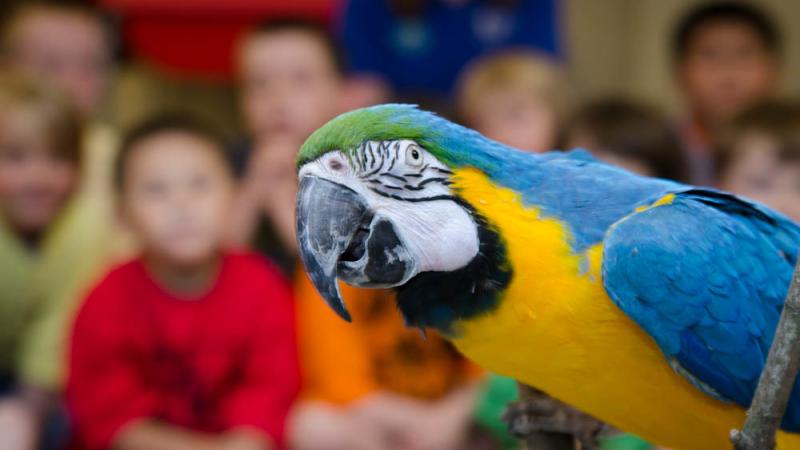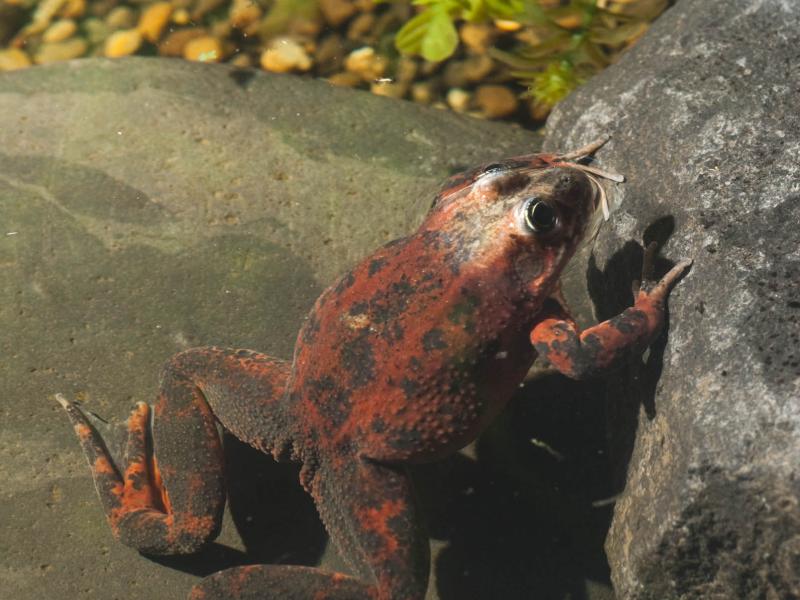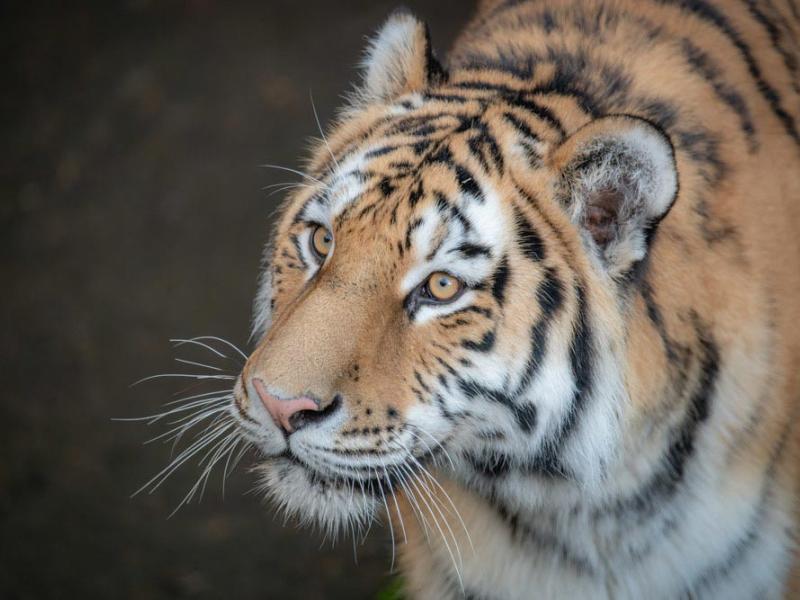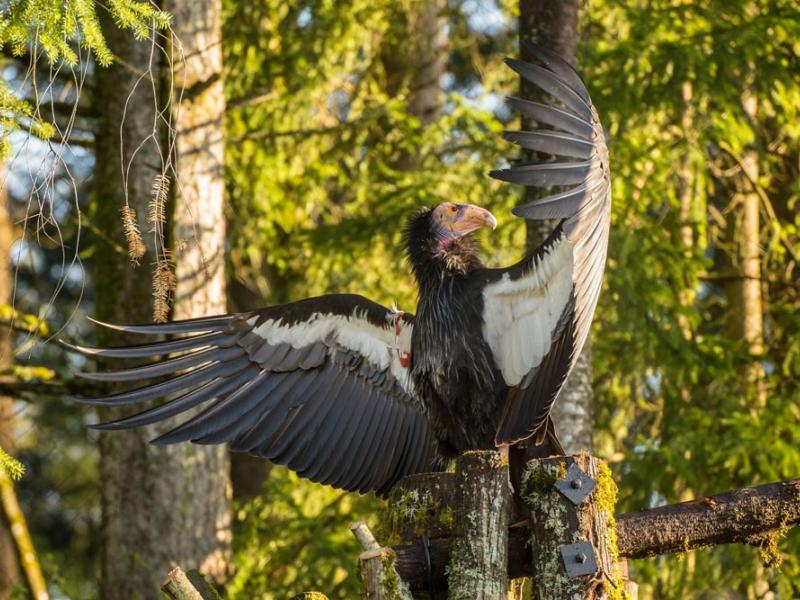
Blue and gold macaws are common in rainforests in Mexico, Central America and northern South America. They are herbivores. Blue and gold macaws use their beaks as a "third foot" to help them climb.
Back and upper tail feathers are brilliant blue; the underside of the tail is olive yellow. Forehead feathers are green. Wing feathers are blue with green tips; underwing coverts and breast are yellow-orange. The bare facial area is creamy white with several lines made of small black feathers. The beak is gray-black; the throat black. Eyes are yellow and legs are gray.
Macaw behavior and facts
- Their diet consists primarily of fruits, vegetable matter, seeds, nuts, leaves and bark. They also eat clay on exposed riverbank clay licks as a mineral supplement.
- Blue and gold macaws are generally seen in pairs but may form flocks of up to 30 birds. Paired birds fly with wings almost touching. Each morning, they fly from roosting sites to feeding grounds and return just before sunset, flying high above the forest canopy. They do not migrate.
- These macaws are extremely wary. At the slightest sign of danger, they rise into the air, screeching loudly.
- Their powerful beak crushes seeds and opens nuts. For very hard nuts, the bird uses the lower part of the beak to file down the nut's shell before cracking it open. The thick, fleshy tongue moves the food around as the macaw works on it.
From birth to death
- Like other macaws, they are monogamous (having only one mate throughout their life).
- The nest is made in a hole near the top of a tall, dead tree. Macaws reuse nest cavities created by woodpeckers.
- The female lays 1 to 2 eggs. Incubation: 24 to 26 days by the female, while the male brings food to her.
- Hatchlings are blind and nearly naked. Eyes open at 7 to 14 days; after 7 days, the male helps feed the young; both parents regurgitate partially digested food.
- Molting begins after the breeding season and lasts several months.
- Sexual maturity: 3 to 6 years
- Lifespan: 50 years
Vital statistics
- Males: 34 to 36 inches long from head to tail feathers, 2 to 3 pounds with a 41 to 45 inch wingspan
- Females: 32 to 34 inches long from head to tail feathers, lighter and with a shorter wingspan
Macaws, the Oregon Zoo and you
Pele, a blue and gold macaw, is part of the zoo's Wildlife Live show. He was hatched in 2000 and arrived at the zoo in 2004. Like Pele, all blue and gold macaws are intelligent birds. They show emotions or intentions by cocking their heads, vocalizing, flashing their eyes (by a voluntary constriction of the pupils) and blushing. They also use fluffing of the feathers, raising the wings, prancing, bowing, shaking their tail feathers, and head bobbing as forms of communication.




